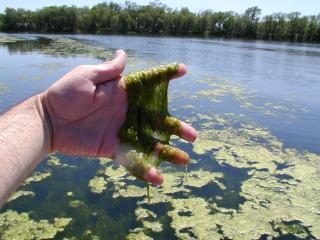
The University of Nebraska State Museum will present a program for children and families about toxic algae as part of its Sunday with a Scientist series 1:30-4:30 p.m. June 20 at Morrill Hall.
The program, "Algae: The Good, the Bad and the Ugly," will explore the different types of algae found in Nebraska's lakes, ponds and streams, and the science behind aquatic ecology. Museum hours are 1:30-4:30 p.m. on Sundays.
"Algae: The Good, the Bad and the Ugly," will be led by Tadd Barrow, water quality extension educator for the School of Natural Resources. Barrow and other educators from the school will help museum visitors understand more about algae and important roles it plays in water chemistry and the food chain.
Barrow and colleagues will demonstrate how there are a lot of misconceptions surrounding the mysterious scum that floats in the state's surface water. Algae are rootless, microscopic plants that occur in all waters relative to the amount of nutrients available - but not all of them are dangerous. Blue-green algae, a type of cyanobacteria, are the only kind of algae that have the ability to produce toxins.
The presenters will bring photos and samples of different types of algae for visitors to touch and examine with microscopes, and to clarify which types are toxic and nontoxic. They will also discuss the causes of extreme algae blooms and the harmful effects they can have on the environment and our health, such as disruption of the food chain, livestock and pet deaths, fish kills, and human illness.
Sunday with a Scientist is a series of presentations that highlights scientific research while educating children and families.
For updates on the Sunday with a Scientist schedule, go to http://www.museum.unl.edu. For more information about algae and other water issues, go to http://water.unl.edu/lakes.
- By Dana Ludvik, University of Nebraska State Museum
More details at: www.museum.unl.edu